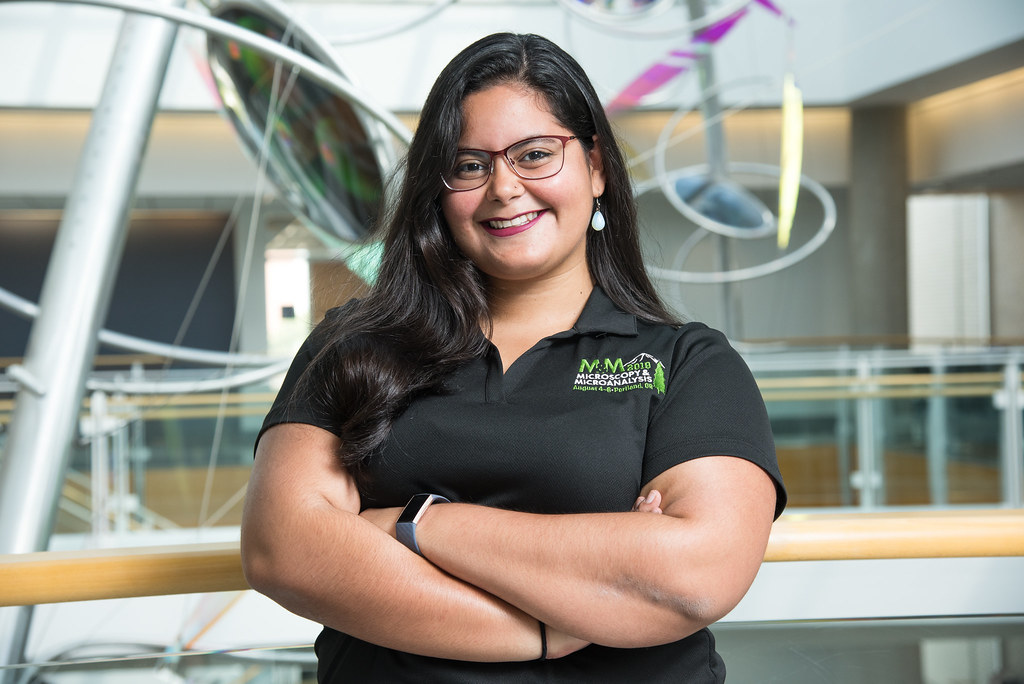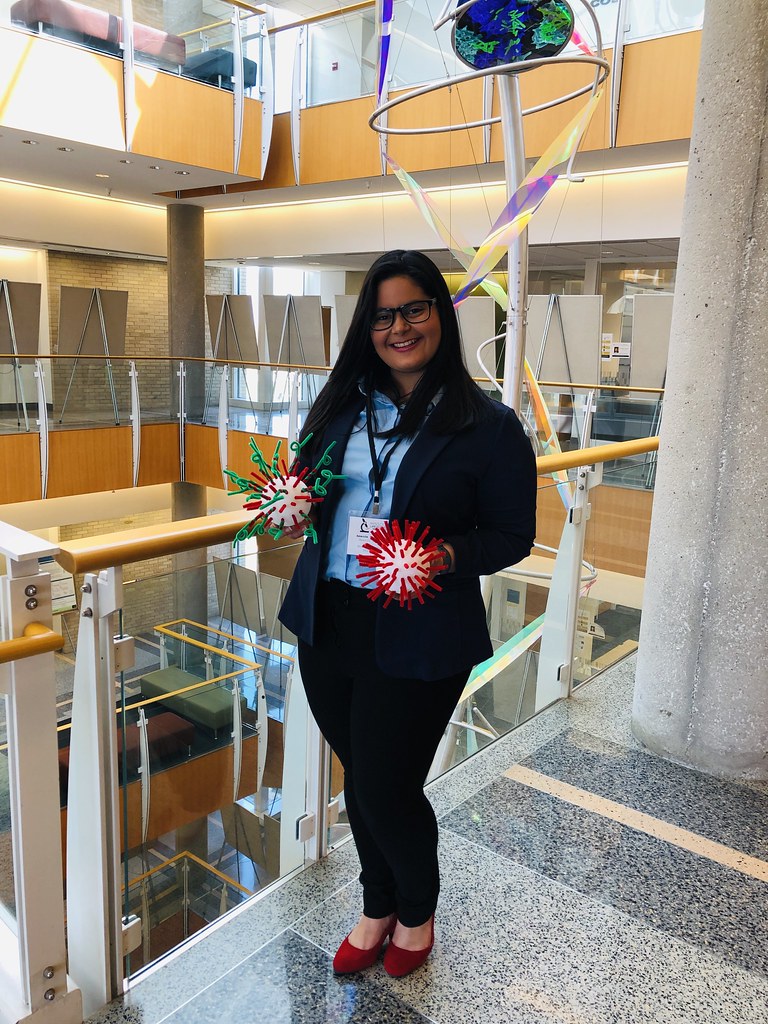
By Mariah Cox | Bond LSC
Dry erase markers and Styrofoam molecular models are a part of Amanda Paz Herrera’s repertoire when teaching complex scientific processes to the average person.
Teaching the next generation of scientists requires work and discipline, but Paz Herrera is up for the task.
Paz Herrera takes her science on the road with Science on Wheels, a traveling group of graduate students and postdoctoral researchers at MU who aim to make science accessible to rural communities in Columbia’s surrounding counties. Sciences on Wheels visits schools, nursing homes, clubs and public events making it imperative to communicate complex scientific processes and mechanisms to all learning levels.
“We should be able to build a knowledge bridge to communicate what we as scientists do without jargon making people feel uncomfortable,” said Paz Herrera, a third-year biochemistry Ph.D. student in Donald Burke’s lab at Bond LSC. “We’re supported by taxpayer money, so the community has a right to know how that money is being used and how we’re moving forward scientifically.”
Paz Herrera emphasizes the importance of diversity and representation in the field on top of her passion for science education and outreach.
“Scientists look like you and me and there’s way more diversity than is depicted in popular thought,” Paz Herrera said. “One of the reasons I do science on wheels is to show what a scientist can look like and that brings a lot of power to little kids that may look like me. When they see someone that looks like them that can do this, that is life-changing.”
Paz Herrera’s research has been driven by her desire to see and understand things at the tiniest level. When she was in the second grade, she owned a play light microscope and would look at her hair or the fibers from her shirt.
When going through the three rotations at the start of her doctorate program, Paz Herrera visited a nuclear magnetic resonance lab and an X-ray crystallography lab, both of which would provide her expertise in studying biology at the structural level. However, her third rotation in the Burke lab changed her perception of what the rest of her program could look like.
While the Burke lab doesn’t specialize in structural biology, its focus on viruses and cancers offers an avenue for Paz Herrera to apply her interest.
A recent study Paz Herrera collaborated on with her colleagues from the Burke lab and researchers across campus optimized RNA and DNA molecules, called aptamers, to carry cancer diagnostics or therapeutics like backpacks to receptors on cell surfaces.
Now, Paz Herrera is looking to visualize the interaction of those same molecules with a protein on the cell surface of the Ebola virus for her dissertation.
However, working with the actual Ebola virus requires a biosafety level 4, and the Bond Life Sciences Center only has a biosafety level 2. So, the researchers in the Burke lab had to get creative.
To study the virus interaction in a safe manner, collaborative researcher Alex Bukreyev who works in Galveston, Texas, engineered a lab model that combines a cattle virus with the protein present on the Ebola virus cells. Because the virus only infects cattle, researchers won’t be infected but can still study what they’re most interested in – the glycoprotein on Ebola cells.
Paz Herrera wants to visualize the interaction to understand how that happens. Understanding the interaction between the proteins on the surface of cells and the aptamers can help researchers develop drugs or diagnostics further down the line.
Visualizing it isn’t as easy as looking under a microscope. By themselves, aptamers can’t be seen on the surface of a cell, making it impossible to find where they are or see how they are functioning.
Paz Herrera is working on building a ‘plug-and-play’ modular dart made up of an aptamer, an interjecting body and a gold nanoparticle tail. The gold nanoparticle tail allows her to see where the aptamer is and subsequently visualize the interaction happening.

Using a basic electron microscope available in Mizzou’s Electron Microscope Core, Paz Herrera has begun to infer where the interaction is using staining. However, she is looking forward to using cryo-electron microscopy (CryoEM) that will soon be available. Using CryoEM will allow her to see the aptamer interaction embedded in ice, providing more molecular detail.
The interjecting body in her model joins the gold nanoparticle with a compatible aptamer. This technology can expand far past Ebola and will help researchers study the interaction between aptamers and proteins in other applications.
Paz Herrera didn’t have much research experience as an undergrad. Instead, she did a lot of educational outreach with elementary and high school students.
“I would do cheek cell samples with them. They would swab the inside of their cheek, put it on a slide and stain it and see their own cells,” Paz Herrera said. “They would go crazy.”
As she progressed in her biochemistry career, she learned that there was more to science than viewing cells under a microscope. She saw graduate school as an opportunity to solidify herself as a scientist and also to prepare to teach the next generation of scientists.
“I really want to do what some of the best professors did for me – to inspire a thirst for inquiry and asking questions,” Paz Herrera said. “When a professor uses an acronym in class, they expect you to understand what they’re saying, but learning isn’t like that and shouldn’t be like that. Sometimes we have great experts in the field that have the curse of knowledge and don’t have the best tools to communicate that knowledge.”
Paz Herrera is also minoring in college teaching and has been shadowing Margaret Lange’s classes, an assistant professor in the Department of Molecular Microbiology and Immunology, to prepare herself as a future educator. She also has the ambitious goal of being a guest lecturer in all of the biochemistry undergraduate classes to strengthen her skills and receive feedback.
Her goal is to make learning science more relatable and enjoyable.
“As I progress in my education, although I become focused in my field, I will never forget where I started so that when I teach, I can break the complexity barrier,” Paz Herrera said. “I want to make science appealing, understandable and accessible not only to my future students but to the community and public as well.”

